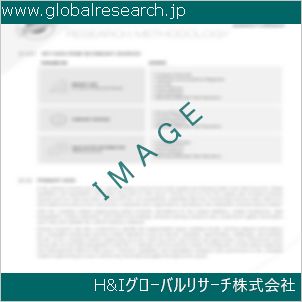Table of Contents
1 Industry Overview of P-Toluicacid
1.1 Definition and Specifications of P-Toluicacid
1.1.1 Definition of P-Toluicacid
1.1.2 Specifications of P-Toluicacid
1.2 Classification of P-Toluicacid
1.3 Applications of P-Toluicacid
1.3.1 Nuclear Application
1.3.2 Non-Nuclear Application
1.4 Industry Chain Structure of P-Toluicacid
1.5 Industry Overview and Major Regions Status of P-Toluicacid
1.5.1 Industry Overview of P-Toluicacid
1.5.2 Global Major Regions Status of P-Toluicacid
1.6 Industry Policy Analysis of P-Toluicacid
1.7 Industry News Analysis of P-Toluicacid
2 Manufacturing Cost Structure Analysis of P-Toluicacid
2.1 Raw Material Suppliers and Price Analysis of P-Toluicacid
2.2 Equipment Suppliers and Price Analysis of P-Toluicacid
2.3 Labor Cost Analysis of P-Toluicacid
2.4 Other Costs Analysis of P-Toluicacid
2.5 Manufacturing Cost Structure Analysis of P-Toluicacid
2.6 Manufacturing Process Analysis of P-Toluicacid
3 Technical Data and Manufacturing Plants Analysis of P-Toluicacid
3.1 Capacity and Commercial Production Date of Global P-Toluicacid Major Manufacturers in 2023
3.2 Manufacturing Plants Distribution of Global P-Toluicacid Major Manufacturers in 2023
3.3 R&D Status and Technology Source of Global P-Toluicacid Major Manufacturers in 2023
3.4 Raw Materials Sources Analysis of Global P-Toluicacid Major Manufacturers in 2023
4 Capacity, Production and Revenue Analysis of P-Toluicacid by Regions, Types and Manufacturers
4.1 Global Capacity, Production and Revenue of P-Toluicacid by Regions 2019-2024
4.2 Global and Major Regions Capacity, Production, Revenue and Growth Rate of P-Toluicacid 2019-2024
4.3 Global Capacity, Production and Revenue of P-Toluicacid by Types 2019-2024
4.4 Global Capacity, Production and Revenue of P-Toluicacid by Manufacturers 2019-2024
5 Price, Cost, Gross and Gross Margin Analysis of P-Toluicacid by Regions, Types and Manufacturers
5.1 Price, Cost, Gross and Gross Margin Analysis of P-Toluicacid by Regions 2019-2024
5.2 Price, Cost, Gross and Gross Margin Analysis of P-Toluicacid by Types 2019-2024
5.3 Price, Cost, Gross and Gross Margin Analysis of P-Toluicacid by Manufacturers 2019-2024
6 Consumption Volume, Consumption Value and Sale Price Analysis of P-Toluicacid by Regions, Types and Applications
6.1 Global Consumption Volume and Consumption Value of P-Toluicacid by Regions 2019-2024
6.2 Global and Major Regions Consumption Volume, Consumption Value and Growth Rate of P-Toluicacid 2019-2024
6.3 Global Consumption Volume and Consumption Value of P-Toluicacid by Types 2019-2024
6.4 Global Consumption Volume and Consumption Value of P-Toluicacid by Applications 2019-2024
6.5 Sale Price of P-Toluicacid by Regions 2019-2024
6.6 Sale Price of P-Toluicacid by Types 2019-2024
6.7 Sale Price of P-Toluicacid by Applications 2019-2024
6.8 Market Share Analysis of P-Toluicacid by Different Sale Price Levels
7 Supply, Import, Export and Consumption Analysis of P-Toluicacid
7.1 Supply, Consumption and Gap of P-Toluicacid 2019-2024
7.2 Global Capacity, Production, Price, Cost, Revenue, Supply, Import, Export and Consumption of P-Toluicacid 2019-2024
7.3 USA Capacity, Production, Price, Cost, Revenue, Supply, Import, Export and Consumption of P-Toluicacid 2019-2024
7.4 EU Capacity, Production, Price, Cost, Revenue, Supply, Import, Export and Consumption of P-Toluicacid 2019-2024
7.5 China Capacity, Production, Price, Cost, Revenue, Supply, Import, Export and Consumption of P-Toluicacid 2019-2024
7.6 Japan Capacity, Production, Price, Cost, Revenue, Supply, Import, Export and Consumption of P-Toluicacid 2019-2024
8 Major Manufacturers Analysis of P-Toluicacid
8.1 Manufacturer One
8.1.1 Company Profile
8.1.2 Product Picture and Specifications
8.1.2.1 Type I
8.1.2.2 Type II
8.1.2.3 Type III
8.1.3 Capacity, Production, Price, Cost, Gross and Revenue
8.1.4 Contact Information
8.2 Manufacturer Two
8.2.1 Company Profile
8.2.2 Product Picture and Specifications
8.2.2.1 Type I
8.2.2.2 Type II
8.2.2.3 Type III
8.2.3 Capacity, Production, Price, Cost, Gross and Revenue
8.2.4 Contact Information
8.3 Manufacturer Three
8.3.1 Company Profile
8.3.2 Product Picture and Specifications
8.3.2.1 Type I
8.3.2.2 Type II
8.3.2.3 Type III
8.3.3 Capacity, Production, Price, Cost, Gross and Revenue
8.3.4 Contact Information
8.4 Manufacturer Four
8.4.1 Company Profile
8.4.2 Product Picture and Specifications
8.4.2.1 Type I
8.4.2.2 Type II
8.4.2.3 Type III
8.4.3 Capacity, Production, Price, Cost, Gross and Revenue
8.4.4 Contact Information
8.5 Manufacturer Five
8.5.1 Company Profile
8.5.2 Product Picture and Specifications
8.5.2.1 Type I
8.5.2.2 Type II
8.5.2.3 Type III
8.5.3 Capacity, Production, Price, Cost, Gross and Revenue
8.5.4 Contact Information
…
9 Marketing Trader or Distributor Analysis of P-Toluicacid
9.1 Marketing Channels Status of P-Toluicacid
9.2 Traders or Distributors with Contact Information of P-Toluicacid by Regions
9.3 Ex-work Price, Channel Price and End Buyer Price Analysis of P-Toluicacid
9.4 Regional Import, Export and Trade Analysis of P-Toluicacid
10 Industry Chain Analysis of P-Toluicacid
10.1 Upstream Major Raw Materials Suppliers Analysis of P-Toluicacid
10.1.1 Major Raw Materials Suppliers with Contact Information Analysis of P-Toluicacid
10.1.2 Major Raw Materials Suppliers with Supply Volume Analysis of P-Toluicacid by Regions
10.2 Upstream Major Equipment Suppliers Analysis of P-Toluicacid
10.2.1 Major Equipment Suppliers with Contact Information Analysis of P-Toluicacid
10.2.2 Major Equipment Suppliers with Product Pictures Analysis of P-Toluicacid by Regions
10.3 Downstream Major Consumers Analysis of P-Toluicacid
10.3.1 Major Consumers with Contact Information Analysis of P-Toluicacid
10.3.2 Major Consumers with Consumption Volume Analysis of P-Toluicacid by Regions
10.4 Supply Chain Relationship Analysis of P-Toluicacid
11 Development Trend of Analysis of P-Toluicacid
11.1 Capacity, Production and Revenue Forecast of P-Toluicacid by Regions and Types
11.1.1 Global Capacity, Production and Revenue of P-Toluicacid by Regions 2024-2029
11.1.2 Global and Major Regions Capacity, Production, Revenue and Growth Rate of P-Toluicacid 2024-2029
11.1.3 Global Capacity, Production and Revenue of P-Toluicacid by Types 2024-2029
11.2 Consumption Volume and Consumption Value Forecast of P-Toluicacid by Regions, Types and Applications
11.2.1 Global Consumption Volume and Consumption Value of P-Toluicacid by Regions 2024-2029
11.2.2 Global and Major Regions Consumption Volume, Consumption Value and Growth Rate of P-Toluicacid 2024-2029
11.2.3 Global Consumption Volume and Consumption Value of P-Toluicacid by Types 2024-2029
11.2.4 Global Consumption Volume and Consumption Value of P-Toluicacid by Applications 2024-2029
11.3 Supply, Import, Export and Consumption Forecast of P-Toluicacid
11.3.1 Supply, Consumption and Gap of P-Toluicacid 2024-2029
11.3.2 Global Capacity, Production, Price, Cost, Revenue, Supply, Import, Export and Consumption of P-Toluicacid 2024-2029
11.3.3 USA Capacity, Production, Price, Cost, Revenue, Supply, Import, Export and Consumption of P-Toluicacid 2024-2029
11.3.4 EU Capacity, Production, Price, Cost, Revenue, Supply, Import, Export and Consumption of P-Toluicacid 2024-2029
11.3.5 China Capacity, Production, Price, Cost, Revenue, Supply, Import, Export and Consumption of P-Toluicacid 2024-2029
11.3.6 Japan Capacity, Production, Price, Cost, Revenue, Supply, Import, Export and Consumption of P-Toluicacid 2024-2029
12 New Project Investment Feasibility Analysis of P-Toluicacid
12.1 New Project SWOT Analysis of P-Toluicacid
12.2 New Project Investment Feasibility Analysis of P-Toluicacid
13 Conclusion of the Global P-Toluicacid (CAS 99-94-5) Industry 2024 Market Research Report
| ※参考情報 p-メチル安息香酸(p-Toluic acid)は、化学式C8H8O2で表される有機化合物であり、特に芳香族化合物の一種です。CAS番号は99-94-5で、一般的にはメチル安息香酸と呼ばれることもあります。この化合物は、苛性アルカリや酸触媒の存在下でのメチル化反応を通じて、安息香酸(ベンゼン環にカルボキシル基が付いた化合物)の誘導体として広く用いられています。 p-メチル安息香酸は、白色から淡黄色の結晶であり、特有の芳香を持っています。溶解度に関しては、水にはほとんど溶けませんが、有機溶媒に対しては高い溶解性を示します。この物質の融点は約170℃、沸点は約245℃であり、化学的に安定した性質を有しています。そのため、取り扱いが容易であり、さまざまな産業で重要な中間体として利用されています。 この化合物の特徴として、ベンゼン環にメチル基が付加されていることがあります。これにより、p-メチル安息香酸は電子供与基としての性質を持ち、芳香族求核置換反応において反応性が高まります。この電子供与基の存在は、他の化合物との反応性を変化させるため、合成化学の分野において大きな役割を果たしています。 p-メチル安息香酸には、特定の用法や種類が存在します。この化合物は、特に医薬品や香料、染料の合成において重要な中間体として利用されています。たとえば、抗炎症剤や鎮痛剤などの医薬品の合成において、p-メチル安息香酸は重要な出発原料となります。 さらに、p-メチル安息香酸は樹脂の製造にも用いられています。ポリウレタンやポリエステルなどの合成樹脂に添加されることによって、物性を向上させる役割を果たしています。また、塗料や接着剤の製造においても、この化合物は重要な成分として使用されることがあります。 さらに、p-メチル安息香酸は食品添加物としても利用されます。香料成分として、食品業界において風味を向上させるために使用されることがあります。また、この化合物は天然物の例として、いくつかの植物からも抽出されることがあります。たとえば、トウモロコシやホップなどに含まれており、これらは食品や飲料の香味成分として利用されています。 p-メチル安息香酸を含む関連技術としては、様々な合成法が挙げられます。化学合成やバイオ合成の技術進展により、より効率的かつ環境に優しい方法でこの化合物を得ることが可能になりました。特に、触媒を用いた反応や、微生物を利用した合成手法が注目されています。これらの技術は、持続可能な社会の実現に寄与するものとして、大きな可能性を秘めています。 その一方で、p-メチル安息香酸は、一部の国や地域においては規制の対象となる場合があります。この化合物が環境に与える影響や健康へのリスクが懸念されているため、適切な取り扱いや廃棄方法の確立が求められています。これらのリスク管理の観点からも、研究や技術開発が進められています。 最後に、p-メチル安息香酸は、今後もますますその需要が高まることが予想されます。医薬品や化粧品、食品などの分野での新たな用途開発が進んでおり、これまで以上に注目される化合物の一つです。化学の進展や社会的需要の変化に対応しながら、その役割を果たしていくことでしょう。以上が、p-メチル安息香酸に関する概念の概要です。 |
❖ 免責事項 ❖
http://www.globalresearch.jp/disclaimer












